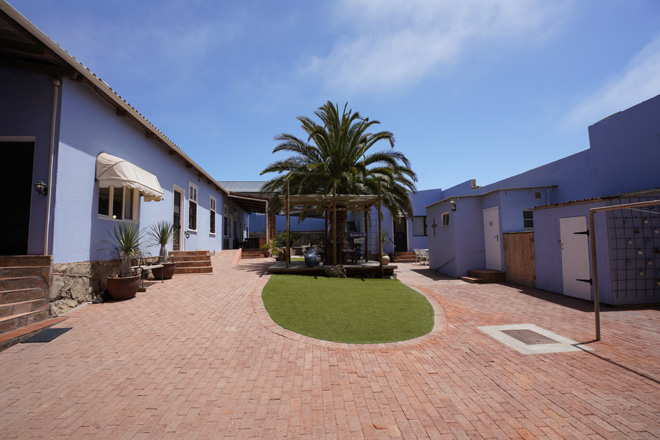
Being the first German enclave in the old Southwest Africa, the town has historical significance, which can be seen all around town, especially in the architecture of the buildings. Most of the attractions in the area are connected to the history of the days gone by and the beauty of the sandy desert landscape just adds to the magic of the stories being told.
Visit Kolmanskop and Elizabeth Bay from House Sandrose Luderitz Namibia
Undertake an outing to the historical ghost town of Kolmanskop – a remnant of wealth of the diamond era of the previous century. Daily permits are available at the entrance to Kolmanskop and tours are presented by professional guides.
Another deserted mining plant to visit is the historical town of Elizabeth Bay Mine. Bookings are essential for this 3-to-4-hour tour. Experience how the desert will take back its own and see first-hand how nature is stronger than man.
Halifax Boat Trip from at House Sandrose Luderitz Namibia
Weather permitting, daily boat trips can be taken to Halifax Island. See dolphins, penguins, seals and whales during this unforgettable outing on the sea.
Day Trip to Pomona and Bogenfels Rock Arch from House Sandrose Luderitz Namibia
Visit another deserted diamond mining plant and settlement, as well as the natural wonder of the rock arch. Bookings must be made in advance for this truly unique experience.
Peninsula Tours from House Sandrose Luderitz Namibia
This guided tour takes you to the stunning beaches, fjords and historical sites in and around Luderitz.
Visit German Architectural Buildings from House Sandrose Luderitz Namibia
Both the Felsenkirch – the Church on the Rock – and the Goerke Haus, are examples of typical German architecture having been built in Luderitz. The church has the most magnificent stained-glass window which can be viewed throughout the day.
Goerke Haus is a turn of the century building, fully restore to its former glory. Please ensure you are updated on the visiting hours to these two buildings, as the closing times differ from summer to winter and from weekday to weekend.
Back to House Sandrose Home Page
Facilities at House Sandrose
- Enclosed courtyard to provide protection against the desert wind
- Private and closed veranda at some of the units
- Kitchenette equipped for basic food preparation
- DSTV in each unit
- Restaurants, cafés and bars within walking distance

Back to House Sandrose Home Page
Things To Do at House Sandrose
In 1487, this peninsula was named Angra Pequena, which means small bay, by Bartolomeu Diaz – the first European to set foot on land in this area. Four centuries later, in 1883 Adolf Lüderitz from Germany purchased Angra Pequena from the local Nama chief and turned it into a trading post. Before 1884, the town was called !Nami#Nûs and an appeal to change the name back to this Nama word, has been going on for some time.
Because of its rich marine life, the town also became a fishing village and guano – collected from the penguin colonies around town, was traded. Whale and seal hunters also used it as a base station.
In 1905, during the Herero Wars, a concentration camp was established on Shark Island by German authorities. They were used as labourers to build and expand the town, port and railway and some also worked on the farms of the white settlers. During the two years the camp was operated, almost 3000 Hereros and Namas died due to the tragic conditions of forced labour. The cemetary at Shark Island still bears witness of this sad and tragic part of the history of the town.
In 1909 diamonds were discovered in the desert at the nearby Kolmanskop, which brought prosperity to town, which lasted only a few years. After the town has been abandoned, the desert took back its land.
The appeal of this harbour town lies in the fact that little has changed since the early 20th century. Although this coastline might be inhospitable to people, it is important for coastal seabird breeding.
Namibia - Things to do at or near House Sandrose in Luderitz last updated in 2024

